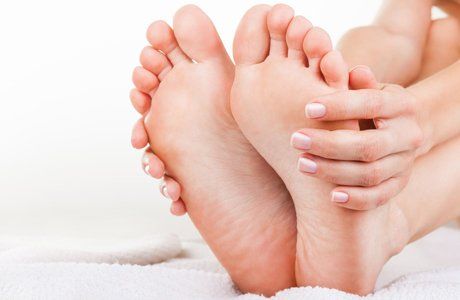Why You’re Getting Foot and Leg Cramps and What Your Body Might Be Telling You
Discover the common causes of foot and leg cramps, including dehydration, circulation issues, nerve compression, and poor footwear. Learn when to see a podiatrist and how to prevent painful cramps.

⚡ Muscle Fatigue and Overuse
Overworked or tired muscles are one of the most common reasons for cramping. Standing all day, increasing your running mileage, or doing intense exercise can overload the calves, arches, or toes.
What helps: Stretch your calves and feet before and after activity, wear supportive shoes, and rest when your muscles feel tight or sore.
💧 Dehydration and Electrolyte Imbalance
Muscles rely on the right balance of magnesium, potassium, calcium, and sodium
to function properly. Losing these minerals through sweat or not drinking enough water can make your muscles spasm.
What helps: Stay hydrated and eat electrolyte-rich foods such as bananas, yoghurt, leafy greens, and avocados.
🩸 Poor Circulation
Reduced blood flow in the legs and feet — often linked with peripheral arterial disease (PAD) or diabetes
can cause muscles to cramp from lack of oxygen.
What helps: If your feet feel cold, change colour, or develop slow-healing wounds, book a circulation assessment with your podiatrist or GP.
🧠 Nerve Compression or Irritation
Conditions like
sciatica, tarsal tunnel syndrome, or neuropathy can irritate the nerves that control your muscles. This may cause cramping, tingling, or burning sensations.
What helps: Persistent cramps with pins and needles should always be checked, early treatment can prevent long-term nerve damage.
🦴 Foot Structure and Biomechanics
Flat feet, high arches, or unsupportive footwear can strain the small muscles of the feet and calves. This imbalance leads to fatigue and cramping, especially after walking or standing for long periods.
What helps: A podiatrist can perform a
biomechanical assessment and prescribe custom orthotics or footwear advice to correct these issues.
💊 Medications and Medical Conditions
Some medications,including diuretics, statins, and blood pressure tablets can increase the likelihood of cramps. Other causes include thyroid problems or kidney disease.
What helps: Never stop a prescribed medication on your own, but do mention recurring cramps to your GP or podiatrist. Adjustments can often reduce symptoms.
🌙 Night-Time (Nocturnal) Cramps
Cramps that wake you at night are common. They can stem from dehydration, poor circulation, or shortened calf muscles after long periods of sitting or standing.
What helps:
Stretch your calves before bed, drink plenty of water, and ensure your duvet or sheets aren’t pressing your toes downward.
👣 When to See a Podiatrist
Book a podiatry appointment if:
- Cramps are frequent or severe
- They disturb your sleep or daily life
- You notice numbness, swelling, or colour changes in your feet
Your podiatrist can assess circulation, nerve health, and muscle balance, helping identify the root cause not just treat the symptom.
✅ The Bottom Line
Foot and leg cramps are common, but not something you should ignore if they persist. They may indicate fatigue, dehydration, circulation problems, or nerve irritation. Understanding the cause is key to lasting relief and your podiatrist can help you get there.






